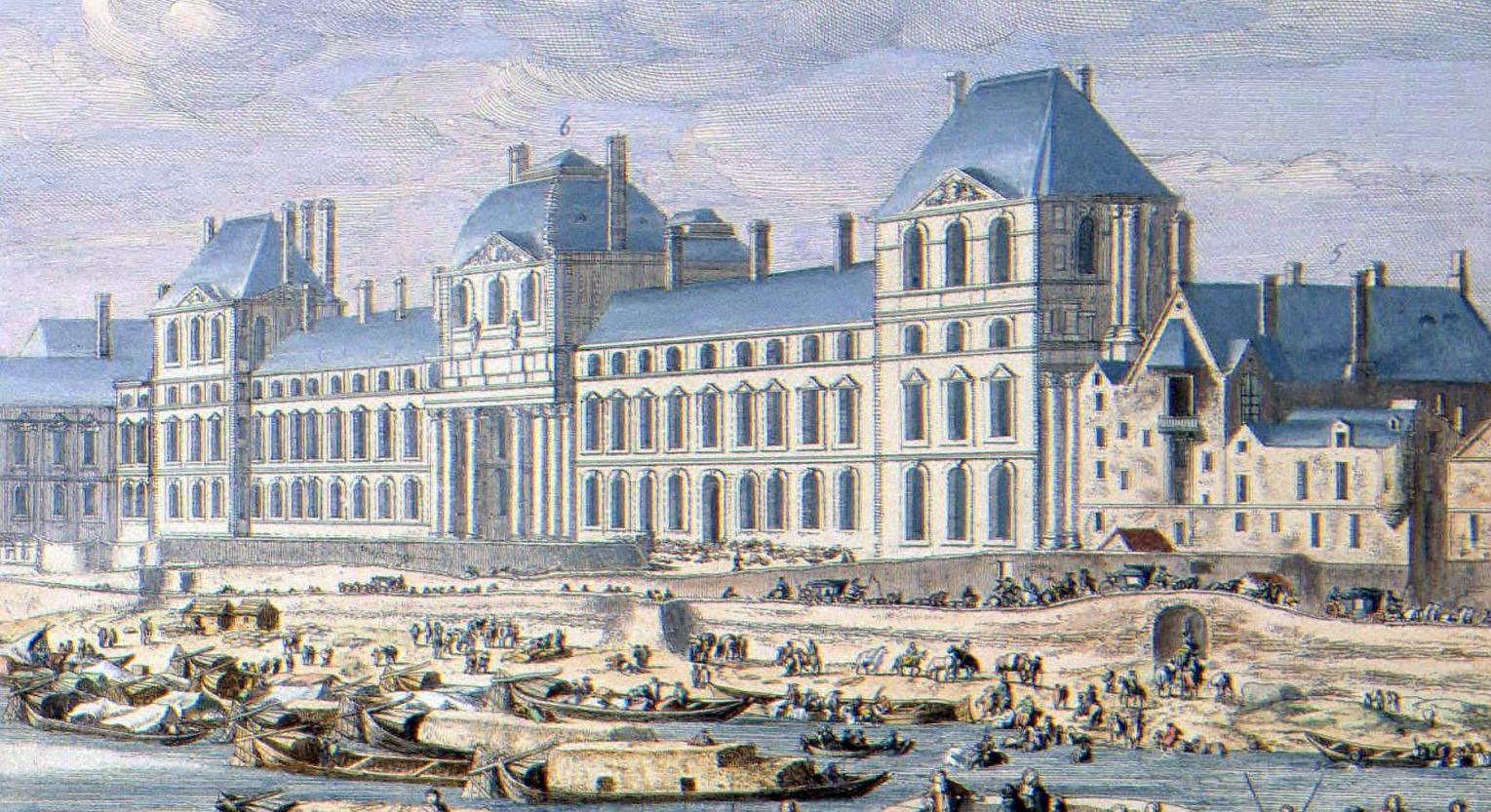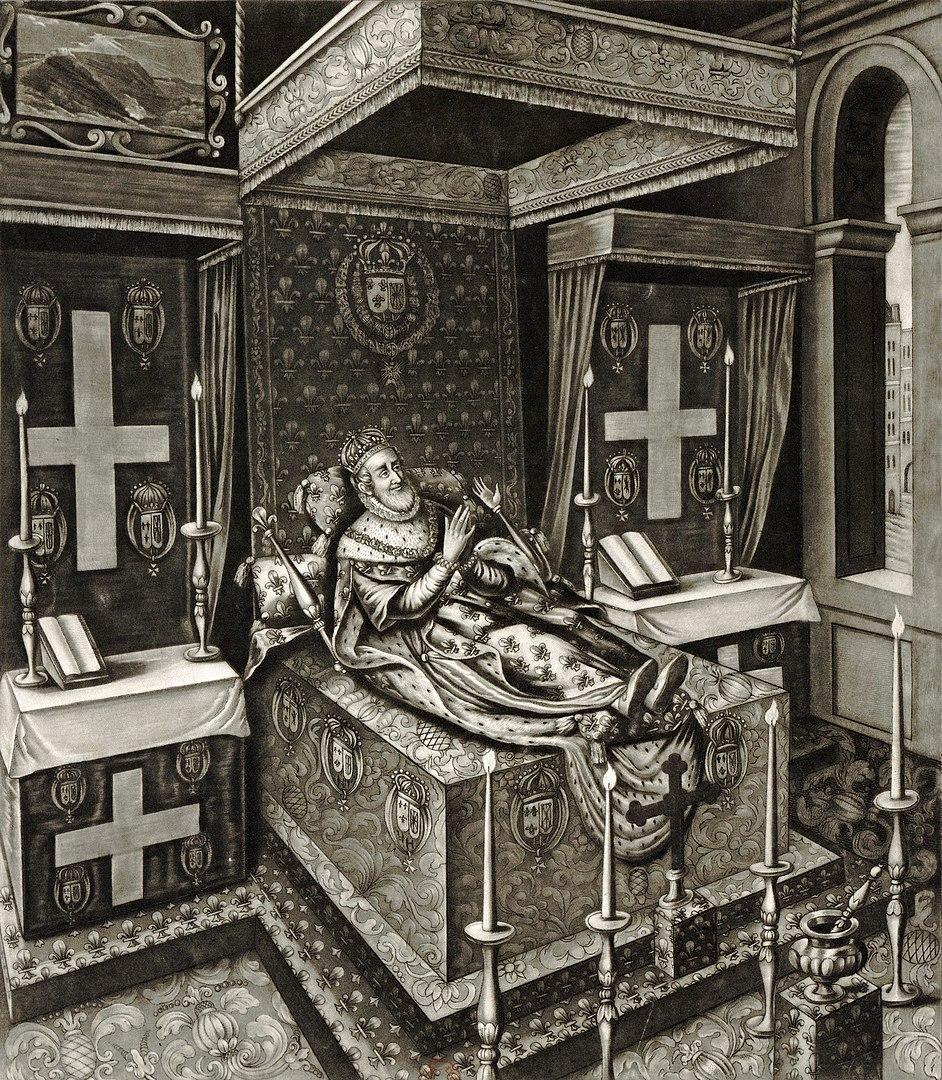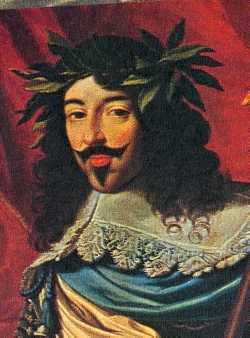 |
| Louvre, 17th Century |
It was at the Louvre in 1623 during Carnival that Prince Charles first saw Louis XIII's youngest sister Henrietta Maria, dancing in a masque. From Art and Object:
Though it’s now known for its renowned art collection, the Louvre began its life as a fortress in the 12th century designed to protect what was then the western edge of Paris. Built by Philip II, the medieval fortress featured a 98-foot tall keep and a moat. It was used to defend the city until Paris grew and other defensive structures were built on the new outskirts of the city in the 14th century.
In the 16th century, however, Francis I demolished the original fortress and rebuilt the Louvre as a Renaissance-style royal residence. It continued to house the royal family until 1682 when Louis XIV built the Palace of Versailles.
Part of the medieval structure can still be seen today in the Louvre’s Salle Basse, built in the 13th century.
In addition to building the renaissance palace, Francis I was an avid art collector. The art he amassed in the 16th century still makes up a core piece of the museum’s collection today, including works by Michelangelo and Raphael, as well as the museum’s most famous painting, Leonardo da Vinci’s Mona Lisa. (Read more.)
 |
| Henri IV lying in state at Louvre |
Henri IV built the Grand Galerie at the Louvre. From Open Editions:
Louis XIII continued the tradition established by his father. In August1612, when the Duke of Pastrana was given an audience in the Petite Galerie, he entered the king’s apartment from the salle des gardes and walked through the antechamber and bedchamber, which were decorated by members of the court disposed by rank in a crescendo that terminated in the gallery. The gallery itself had been set up as a throne room, with Louis XIII and Maria de’ Medici seated side-by-side on an elevated platform at the far end of the room, looking out on the river Seine. Behind them, the ladies of the court stood on stands shaped as “those of a theatre,” while the pages of the king’s and queen’s bedchambers stood behind barriers placed along the sides of the room.19 Along with the members of the royal family, large numbers of courtiers attended such ceremonies, as reported by Camillo Guidi in September 1618:
Monsieur de Bonneuil […] led me to His Majesty, whom I met midway down the gallery as he was coming towards me […] The audience was long and favorable […] and one might say that the whole court and nobility was there.20
Some impressions of Louis XIII. From The Secret Lives of Royals, Aristocrats and Commoners:
Louis XIII was short, ungainly, and---until disease attacked him---inclined to corpulence. He was not beautiful, although Sully, who had served the royal house so faithfully, professed to admire the boy's regular features. His nose was too large, his head out of proportion to his body, his chin projected, his lover lip was unpleasantly thickened, and his mouth was usually half-open. Owing to the awkward formation of his palate he was compelled to speak little and slowly to avoid a trying stammer. He suffered from chronic gout, and it is almost certain that he had at least one epileptic fit. His teeth were decayed, and he was a continual invalid through persistent dyspepsia. Most of these physical defects may be traced in his family history. Many of them he bequeathed to his sons. Philip inherited his undersized stature as well as his brown hair and swarthy skin. In profile Louis XIV challenged comparison with the ancestral Bourbons, and was in more ways than one a true grandson of Henri IV. (Read more.)
And his brother Gaston, HERE.
Share


















1 comment:
One has the tendency to think of kings as being handsome and noble in stature.
Post a Comment